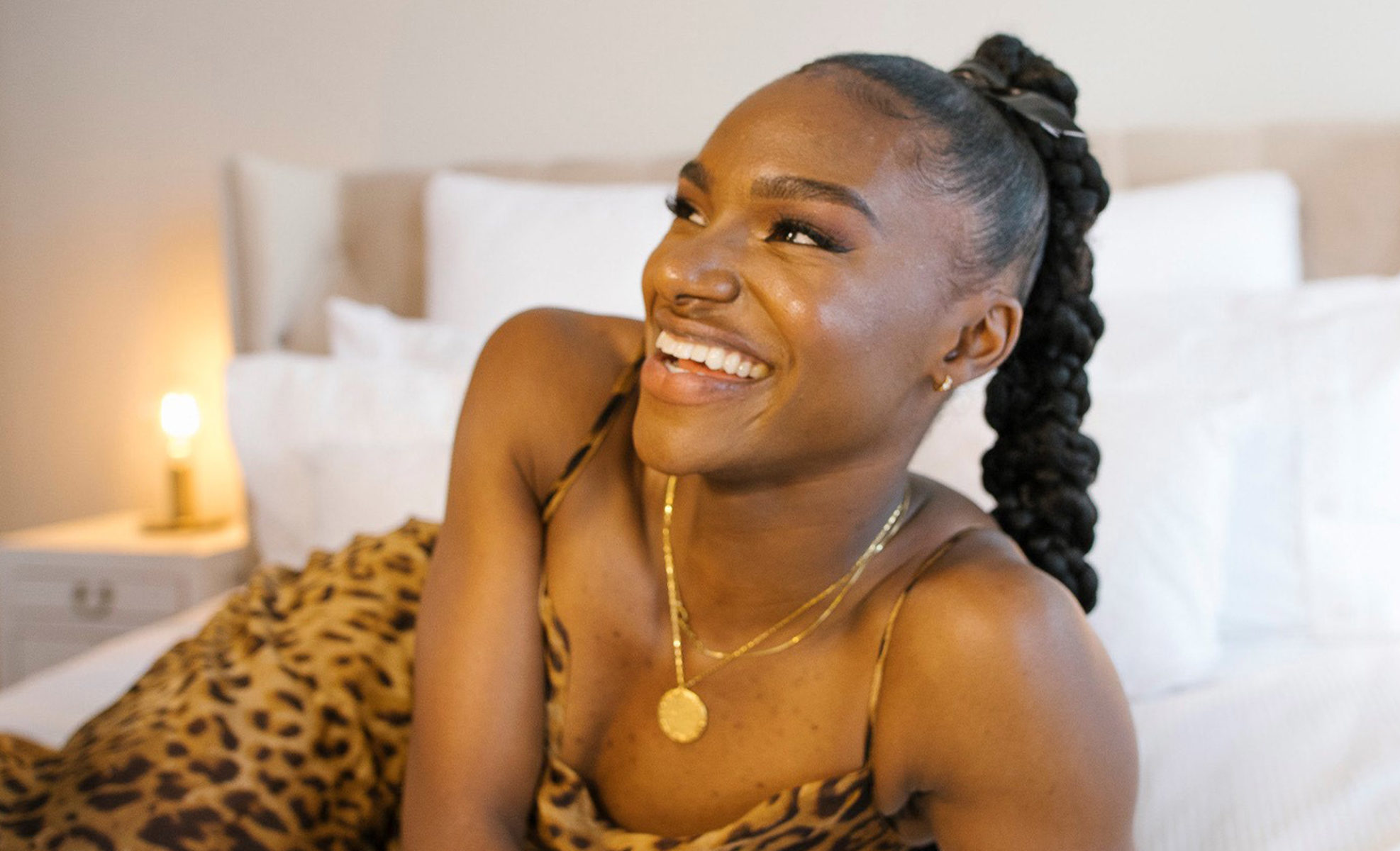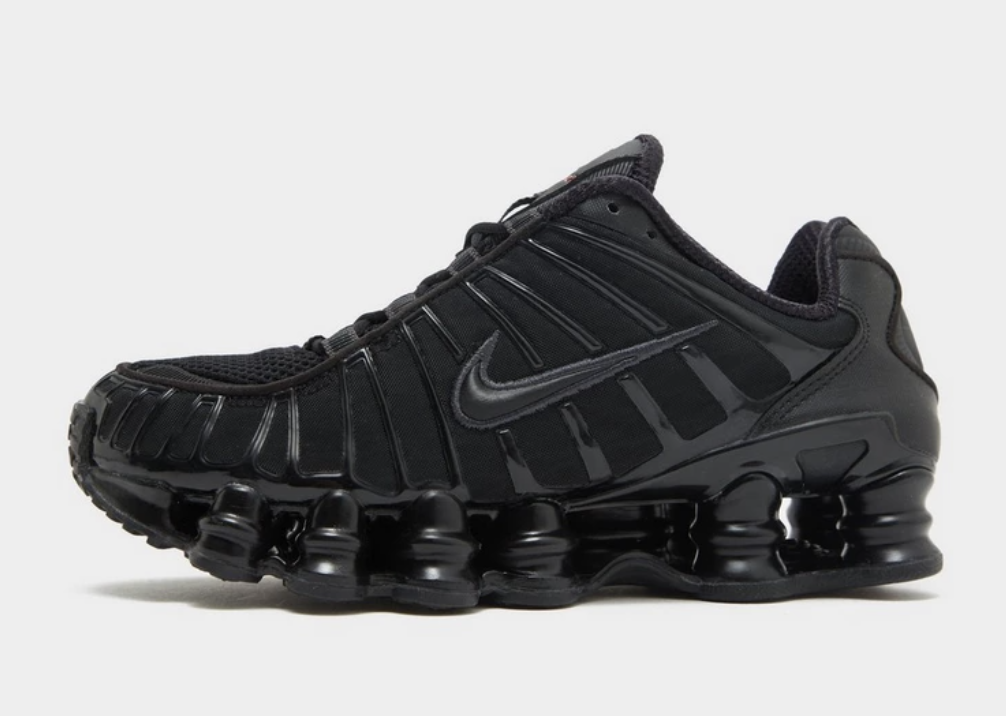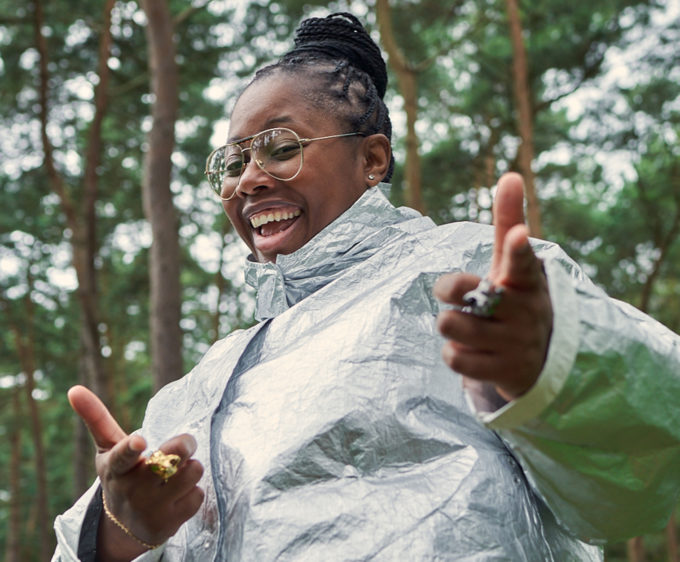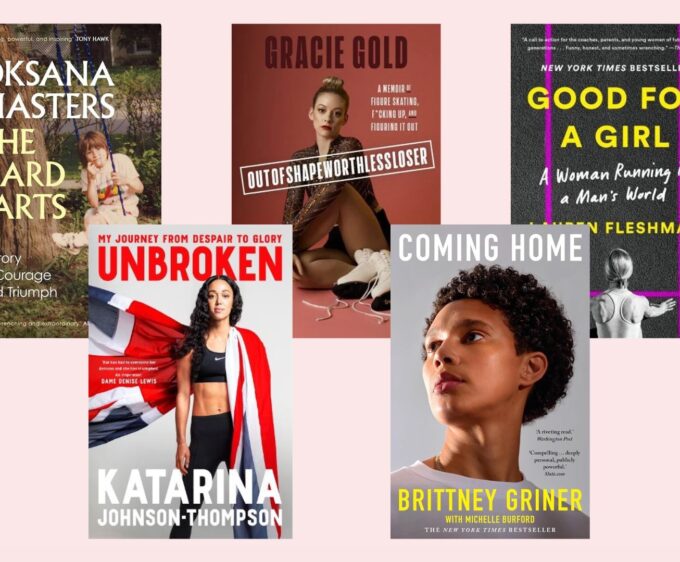
Fast Lane Fashion With Dina Asher-Smith
Blurring the line between fashion and sport, Dina Asher-Smith, the fastest British sprinter in history, talks to us about the transformative power of clothes and the confidence they bring
By Alice Barraclough
She may be the fastest British woman in history, but when Dina Asher-Smith isn’t donning Lycra and a pair of spikes on the track, she’s flexing her fashion muscles, walking on catwalks at Paris Fashion Week and posing for glossy magazine covers. Of course, sport has always come first for the King’s College History graduate – “sport, academics, friends” – in that order. But she admits she’s always been someone who played dress-up. “I was always stealing my mum’s heels and wearing cute matching co-ords when I was younger,” she says. “But I think I only really started to love fashion after university, when I had more time to think and to figure out who I was.”

However her affinity with clothes doesn’t mean she’s an avid shopper. “I don’t really buy clothes that often,” she says. Instead, nodding to her degree, it’s the history behind each of the fashion houses that sparks her interest. Take Alexander McQueen, for example, she says. “His designs are all about making women look fierce and striking – you get the spikes and the skull – they’re beautiful and sensual but also warrior-like.” Her other favourite designers include Maximilian Davis – “I’m a fan because we have similar backgrounds. I’m Jamaican and Trinidadian and so is he” – and Prada, of course. “Everybody loves Prada. I think Prada has a really beautiful, almost simplistic non-sexuality to it – like, it’s very sexy, but I’m not sexy,” she says with a laugh.
It’s not really about the names on the door though, it’s more about how they make you think and feel, says Dina. “I think fashion and clothes can have a really transformative effect. They’re not just an extension of your personality and how you show yourself, but reveal the kind of person you want to be as well,” she explains. “I like fashion that makes me think.” When we speak, Dina is wearing head-to-toe Nike Yoga – it’s clear she’s not one to jump on the latest fashion trend just because. She’s done her research, and questions how culture impacts our fashion choices. “Why is everyone into nostalgic Y2K 1990s fashion?” she asks. “Is it because we had the traumatic pandemic and people are longing to go back to a time where things were a bit more stable? Are they a bit scared to think of what’s next, because what comes next doesn’t seem great? So we want to go back to a time when everything was happy, and are the fashion brands leaning into that or are they forcing people to think forward?”
Fashion not only has the ability to force people to think, but it can also be a force for change. Ever since Dina signed to the model and talent agency Elite London, she’s been pushing to redefine what it means to be a sportswoman. “I’m not a model,” she insists. “I’m just not being the linear sportswoman that we’re used to seeing. The sports world thinks if you’re in a magazine, you’re a model. But I’m just doing what actors and singers do – I’m just engaging in a different market.” The media and the masses have scrutinised female athletes’ looks and bodies for as long as women have been playing sports. On her Vogue cover shoot, Dina specifically asked to make sure her muscles and her strength were shown. “If I was communicating to a younger me, I’d want to see a girl in a magazine who was a sportswoman who was undeniably sporty, not covered up, not trying to hide her muscles, not embarrassed, but just in her full glory, full power and strength. Fortunately, I’ve always had courage in my convictions and I don’t really care what other people say. I’ve never been scared to develop muscles. Why? Because I want to win.

“I’ve always thought of my body as a tool. But I’m very much aware that for lots of other young women or athletes, it’s not like that. I thought it would be empowering to show my muscles – to show that women don’t have to all look the same.” Naturally, 2020 was a tough year for Dina. Six months after becoming the first British woman ever to win a global sprint title in 2019, the pandemic had the world on lockdown. Then, last summer, she was forced to pull out of the 200m at the Tokyo Olympics due to a hamstring injury. “Looking back to 2019, I’m nowhere near the same person I was – not in a bad way – I just think everybody changed during the pandemic,” she says. “I think I’m a bit more chilled and relaxed because life was thrown into perspective – it was an enforced pause. It made me feel very fortunate to be where I am, fortunate that I love my job a lot, fortunate that my job is running fast in a straight line and I can talk about it all day.

“When the most stressful thing in your life is whether you win a race or not – and if you don’t, you know there’s going to be another race next year or, like this summer, another race the week after, it does give you a sense of perspective. I think that helps you run faster too.” This summer is looking particularly busy for the 26-year-old. She’s just flown back from the Rome Diamond League, where she finished third in a strong 200m race, and she’s competing in the World Athletics Championships in Oregon in July, the Birmingham Commonwealth Games in August and also the European Championships in Munich in August. “I’m genuinely excited for the track season coming up,” she says. “Especially for the Commonwealth Games because it’s at home. It’s in Birmingham, and there’s just something really beautiful about being able to perform in front of a home crowd. It’s in front of your fans, the people who’ve been there from the very beginning of your journey. They’ve seen you grow up.”

style
Dina was just 17 years old when she made her first professional debut at the London Anniversary Games in 2013. “I think that you always have to come home. And you always have to put on a show, smile and really be grateful – give your time and sign autographs and take pictures – because they’re the people that tune in, the ones that stay up to 3:00am to watch you in the wrong time zone, so it’s nice to come and compete in their back garden.” The similarities between sport and fashion are aplenty. “A training programme that might work for you will be catastrophic for somebody else. And it’s the same in fashion,” says Dina. “A dress might look fantastic on someone else, but it won’t suit me – and it’s nothing to do with body types, it might be about personality, it might be about the mood you’re in, or the kind of day or week you’re having. And that doesn’t mean it’s not a nice dress, it just means it’s not for you,” she says. “Being able to recognise your uniqueness actually really helps your self-esteem.”
And self-esteem – and confidence in general – is something Dina has in abundance. It practically oozes out of her. “I get a lot of my confidence from sport. But when you engage with fashion at the higher levels you just learn, as long as something’s executed well enough, you can be whatever you want in this world.” Sprinters – especially in comparison to long-distance runners – have always garnered attention for having immaculate manicures, hair and make-up, adopting the ‘look good, feel good, run good’ mindset. “Different events have different personalities, and with the sprint, that’s just part of us and I love being part of that cohort. I have so much fun doing race-day hair.”

For the World Championships, she’s toying with the idea of wearing a sparkly Prada scrunchie that she bought on a whim at the airport. She’s yet to try it out though and says if she gets hair in her face, or it’s impractical, she’s not interested. “But I do like a little bit of flair and pizazz. At the end of the day, you have to feel 100 percent, and if you look 100, you’ll feel 100,” she says. “When you’re on the track, it’s the culmination of however many months or years of hard work, and if you’re convinced it’s going to be your moment, you might as well feel fabulous, and look fabulous.” If she wasn’t wearing her GB kit, and could design her very own high-fashion custom suit to run in, Dina says she’d love to race in a mono-style leotard. “I love a leotard, I just feel very aerodynamic. Structurally it would have to work though – it has to hold my boobs in (priorities) – but maybe with some interesting cutouts and ab-pop moments.”
Of course, Dina practically lives in Lycra and sports kit – she’s always got a spare clean top in her kitbag. “I’ve also always got a mini makeup bag on me with powder, mascara, lip gloss and perfume (I’m very particular – I like Van Cleef & Arpels’ Moonlight Patchouli). I’m a big fan of Elizabeth Arden’s Eight Hour cream too – it saves lives. I typically also have some spare bobby pins because when it’s time to go, if something’s annoying me, it’s getting pinned up – even if it ends up sticking up as a tuft. As much as we joke about hair and makeup, as long as I can get the job done, I don’t care what I look like.”
However fast Dina runs this summer, one thing’s for sure, she’ll be inspiring women and girls all over the UK to continue, or even start, running. The confidence that she displays both on track and on the red carpet, is not just refreshing, it’s changing the standards of sport and fashion, teaching us all to be a little kinder to ourselves, a little braver in our outfit choices and, in Dina’s words, “Live life like nobody’s watching”.

Editorial Design by Root
Birmingham 2022 Commonwealth Games takes place from Thursday 28 July until Monday 8 August.








